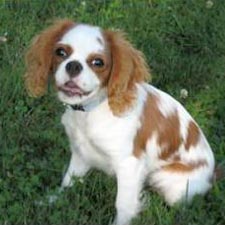Cocker Spaniel Temperament
A charming and gentle mannered creature, the Cocker Spaniel is a dog that enjoys playing but also has a clam and dignified manner about him. This is a dog that gets along well with children, especially when raised with them, and get on well with other animals and with strangers. The Cocker Spaniel is a sociable and amiable dog with a cheerful outlook on life and a responsive attitude. He is highly intelligent making him a stand-out at obedience training. The Cocker Spaniel is a dog that will usually be pretty easy to train, and will be fine for the more inexperienced dog owner as well as more experienced owners.
The Cocker Spaniel is a willing, enthusiastic, and keen dog, and is eager to please, active, and very friendly. Owners may find that these dogs are difficult to housebreak, and often barking can be a problem. These dogs are affectionate, which is great news for those looking for a devoted pet, but the Cocker Spaniel can sometimes get a little over dedicated and clingy, which makes him something of a demanding pet, and certainly not ideal for those that cannot dedicate the time to look after a pet and pay it plenty of attention.
Cocker Spaniel Appearance
The Cocker Spaniel is a pretty, dignified, and elegant looking dog, with a silky, medium length coat and a shorter, undercoat. The coloring can be black, buff, or chocolate, and may have tan trims. The ears of the Cocker Spaniel are long, silky, and hang to the side, adding to its sweet and innocent expression. These dogs are about 13-16 inches in height, and the weight of the Cocker Spaniel is around 22-28 pounds. His body is small but sturdy, and he is a medium shedder, which means that he is not ideal for those with allergies.
Cocker Spaniel Grooming
The coat of the Cocker Spaniel should be brushed every couple of days in order to keep it in good condition, and every couple of months or so you may need to get the coat clipped. Also, during grooming sessions you should check the ear canals to ensure that they are clean and dry.
Cocker Spaniel Health Problems and Life Expectancy
The life expectancy of the Cocker Spaniel is around 10-14 years, and there are a number of health problems that are linked to this breed. This includes PRS. HD, cataracts, autoimmune problems, skin conditions, and epilepsy. You should ensure that the parents of the Cocker Spaniel have OFA and CERF certificates.
Cocker Spaniel History
The Cocker Spaniel was recognized in England in the late 1880s, and in the same period was also introduced in America. The Cocker Spaniel is though to originate from Spanish blood, and this breed was registered with the AKC in 1878.



